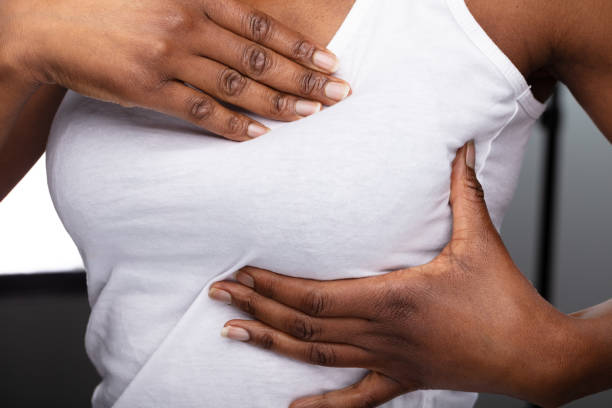
A breast lump is a tissue growth that appears inside your breast. Finding a lump in your breast can be a scary and worrying experience.
Almost all breast lumps are not harmful. More than 80% of them actually turn out to be benign. However, it's crucial to visit your doctor right away to get them evaluated.
What Sensation Does a Breast Lump Produce?
Breast lumps with cancer typically have an uneven shape. They could be anchored to the breast tissue and feel substantial or stiff. They frequently cause no pain. A painful breast lump occasionally turns out to be cancer in women.
The size of breast cancer lumps might vary. One centimeter, or the size of a large lima bean, is the typical minimum size of a lump before a person can feel it; however, this varies depending on the location of the lump in the breast, the size of the breast, and the depth of the lesion.
It's time to schedule an appointment if the lump is new to you, doesn't feel soft, or moves when you touch it. Regular self-exams, clinical breast exams, and annual mammograms all benefit patients. Women can learn about their breasts' typical appearance and sensation by self-examining.
Breast Cancer: Does it Hurt?
The majority of breast cancers are painless. If a person has a menstrual cycle, breast discomfort, or mastalgia, it is more likely associated with that period. Other benign disorders, such as cysts, fibroadenomas, or blocked milk ducts, can also hurt the breasts.
Early breast cancer typically doesn't cause pain. Up until or if it progresses, breast cancer usually doesn't hurt. Even then, some tumors may not produce discomfort. Most tumors don't start hurting until they are two centimeters in size.
An uncommon but aggressive type of breast cancer called inflammatory breast cancer can be painful and manifest with redness, a rash, and intense itching.
Keep in mind that a sore lump doesn't always rule out cancer. Consult a doctor if your breast discomfort is severe or lasts for a long time. They can identify whether cancer or another ailment is the cause.
Which Kinds of Breast Pain are Signs of Breast Cancer?
Breast cancer may be detected by persistent or severe pain. For instance, you should see a doctor if breast pain persists after two menstrual cycles.
Another reason to see a doctor is if one breast is experiencing distinct and ongoing pain. Both sides are generally affected by benign pain.
What Does a Tumor Under the Skin Feel Like?
Surprisingly, lumps, tumors, and other breast-related sensations all have a hard feel as opposed to the more spongy, typical breast tissue. In contrast to a sphere or ball shape, they are frequently unevenly shaped.
Additionally, lumps are typically movable and can be moved around inside the breast.
It's crucial to remember that this can differ from person to person. In the end, you should always talk to your medical team about anything you observe that feels out of the ordinary or different from how your regular breast tissue typically feels.
RELATED: Breast Lumps: 6 Myths And Facts
Typically, Where Do Breast Cancer Lumps Appear?
Anywhere in the breast can develop lumps. Its placement does not indicate whether it is breast cancer or not.
Do Lumps from Breast Cancer Move?
On examination, most lumps will be moveable within the breast tissue, but they usually do not "move" about the breast. A breast bulge may, however, occasionally become attached to the chest wall.
Never Hesitate to Seek Medical Help
The most important thing to remember is that anyone with any suspicious breast lumps should seek medical attention.
A mammogram or breast ultrasound are two straightforward imaging procedures that can typically give patients peace of mind that a breast lump is benign. A breast MRI or biopsy may be required to determine whether the lump is cancerous.








